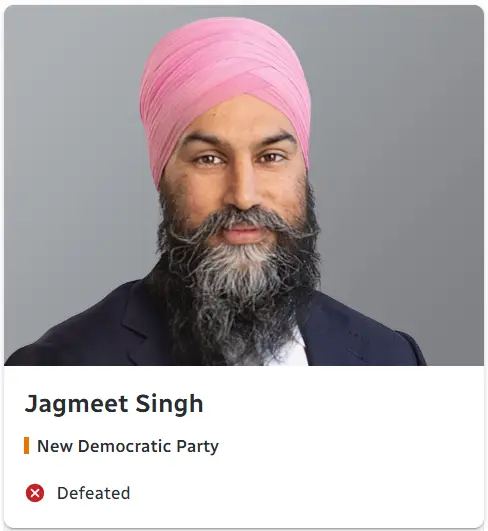The 2025 Canadian federal election marked a dramatic political turnaround, with Prime Minister Mark Carney’s Liberal Party securing a fourth consecutive term, albeit as a minority government, despite earlier projections favoring the Conservatives. This election, held on April 28, 2025, saw unprecedented shifts in voter sentiment, leadership upheavals, and a resurgent focus on sovereignty amid external pressures from the United States. Below is a detailed analysis of the results, key players, and the forces that shaped this pivotal moment in Canadian history.
Election Results at a Glance
Seat Distribution

- Liberals: 168–169 seats (short of the 172 needed for a majority).
- Conservatives: 144 seats, remaining the Official Opposition.
- Bloc Québécois: 22–23 seats, retaining influence in Quebec.
- New Democratic Party (NDP): 7 seats, a historic low.
- Green Party: 1 seat.
- Popular Vote Share
- Liberals: 43.7% (+11.1% from 2021).
- Conservatives: 41.3% (+7.6%).
- Bloc Québécois: 6.3% (-1.3%).
- NDP: 6.3% (-11.5%).
This election marked the first time since 1930 that both major parties secured over 40% of the popular vote, reflecting a consolidation of support away from smaller parties.
Key Candidates and Upsets
Mark Carney (Liberal Leader)

- Background: Former Governor of the Bank of Canada and Bank of England, Carney became Prime Minister in March 2025 after Justin Trudeau’s resignation. This was his first election as a candidate.
- Platform: Promised tax cuts for low-income earners, doubling home construction, and a national electricity grid to reduce U.S. energy dependence.
- Historic Win: First PM without prior elected experience, securing a mandate despite Trump’s threats to annex Canada.
Pierre Poilievre (Conservative Leader)

- Defeat: Lost his seat in Carleton, Ontario, after seven terms, a shocking blow to the Conservatives.
- Campaign Focus: Advocated “common sense politics” and criticized Liberal policies on housing and cost of living, but struggled to distance himself from Trump’s rhetoric.
Jagmeet Singh (NDP Leader)

- Loss: Finished third in his Burnaby Central riding, ending the NDP’s 20-year hold on Hamilton Centre.
- Party Decline: NDP’s vote share collapsed by 11.5%, losing official party status (requires 12 seats).
Factors Shaping the Election
1. Trudeau’s Resignation and Liberal Revival
- Justin Trudeau stepped down in January 2025 amid declining approval ratings and a caucus revolt.
- Carney’s appointment revitalized the Liberals, erasing a 20-point Conservative polling lead.
2. Trump’s Tariffs and Sovereignty Threats

- U.S. President Donald Trump’s threats to impose tariffs and annex Canada galvanized nationalist sentiment. Carney’s defiant stance—vowing to negotiate “on our terms”—resonated with voters.
- The Conservatives’ association with Trump-style populism backfired, particularly in swing regions like Ontario’s “905” belt.
3. Voter Turnout and Advance Polling
- Turnout: 68.3%, up 6% from 2021.
- Advance Voting: A record 7.3 million Canadians cast early ballots, a 25% increase from 2021.
4. Quebec’s Pivotal Role
- The Bloc Québécois lost 11 seats, with Liberals gaining ground in regions like Montmorency-Charlevoix and Abitibi-Baie-James-Nunavik-Eeyou.
- Bloc leader Yves-François Blanchet criticized Trump’s “jibber-jabber” but failed to counter Liberal gains.
Policy Priorities for the Liberal Minority
- Housing Crisis: Carney pledged to “build, baby, build”—doubling annual home construction using Canadian labor and materials.
- Trade Diversification: Reducing reliance on the U.S. by expanding partnerships with the EU and UK.
- Defense Spending: Increasing military budgets to meet NATO’s 2% GDP target.
- Climate and Energy: A national grid to boost renewable energy integration.
Analysis: A Nation at a Crossroads
The 2025 election underscored Canada’s resilience in the face of external pressures and internal divisions. While the Liberals’ minority government will require alliances—likely with the Bloc or NDP—Carney’s technocratic leadership and pro-sovereignty stance have redefined Canadian politics. However, challenges loom: reconciling economic ties with a hostile U.S. administration, addressing housing affordability, and rebuilding trust in institutions.
As Carney declared in his victory speech, “Trump will never break us.” Yet, the road ahead demands navigating a fractured electorate and a world increasingly defined by geopolitical volatility.


